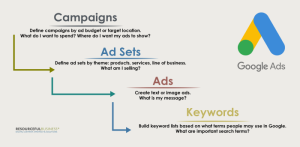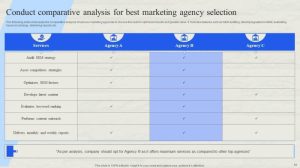
User experience (UX) in e-commerce marketing sets the stage for this enthralling narrative, offering readers a glimpse into a story that is rich in detail with entertaining interactive style and brimming with originality from the outset.
From the importance of UX design to personalized recommendations and accessibility features, this topic explores the key elements that shape the online shopping experience.
User Experience (UX) in E-commerce Marketing

User Experience (UX) design plays a crucial role in the success of e-commerce marketing. It focuses on creating a seamless and enjoyable experience for customers when interacting with online platforms. A well-designed UX can significantly impact customer engagement, conversion rates, and overall satisfaction.
Importance of UX Design in E-commerce Marketing
A user-friendly interface, intuitive navigation, and clear call-to-action buttons can make the shopping experience more convenient and enjoyable for customers. A positive UX design can build trust, encourage repeat visits, and ultimately lead to higher sales and customer retention.
Enhancing Customer Engagement in E-commerce
Personalization
Tailoring recommendations and content based on user preferences can enhance customer engagement and drive loyalty.
Mobile Optimization
Ensuring that the website is responsive and mobile-friendly can improve the user experience for customers browsing on smartphones and tablets.
Simplified Checkout Process
Streamlining the checkout process by reducing steps and offering multiple payment options can reduce cart abandonment rates and increase conversions.
Common UX Challenges Faced by E-commerce Platforms
Slow Loading Times
Long loading times can frustrate users and lead to high bounce rates. Optimizing website performance is essential for a smooth user experience.
Complicated Navigation
Confusing navigation menus and lack of clear categorization can make it difficult for users to find products, resulting in a poor user experience.
Lack of Visual Appeal
Poor design aesthetics and cluttered layouts can deter users from exploring the website further. Investing in visually appealing design elements can improve engagement.
Factors Influencing UX in E-commerce

When it comes to e-commerce, there are several key factors that play a significant role in shaping the overall user experience. From mobile responsiveness to intuitive navigation, each element contributes to creating a positive and seamless shopping journey for online consumers.
Mobile Responsiveness
Mobile responsiveness is crucial in enhancing UX for online shoppers as more and more people are using their smartphones and tablets to browse and shop online. A website that is not optimized for mobile devices can lead to frustration, slow loading times, and a poor overall user experience. By ensuring that the e-commerce platform is mobile-friendly, businesses can cater to a wider audience and provide a smooth shopping experience across all devices.
Intuitive Navigation
Intuitive navigation is another key factor that greatly impacts user experience in e-commerce. Users should be able to easily find what they are looking for, navigate through different sections of the website, and complete their purchase without any hassle. Clear and organized menus, search functionality, and strategically placed call-to-action buttons can all contribute to a seamless and intuitive browsing experience for online shoppers.
Personalization in E-commerce UX
Personalization in e-commerce UX refers to the practice of tailoring the shopping experience to the individual preferences and behaviors of each user. By leveraging personalized recommendations and other customized features, e-commerce platforms can enhance user satisfaction and drive conversion rates.
Benefits of Personalized Recommendations
- Increased Engagement: By offering product recommendations based on past purchases or browsing history, users are more likely to discover items that align with their interests, leading to higher engagement.
- Improved Conversions: Personalized recommendations can help users find relevant products more quickly, increasing the likelihood of making a purchase and boosting conversion rates.
- Enhanced Customer Loyalty: When users feel understood and catered to, they are more likely to return to the e-commerce platform for future purchases, fostering long-term customer loyalty.
AI in Creating Personalized Shopping Experiences
AI plays a crucial role in creating personalized shopping experiences by analyzing vast amounts of data to understand user preferences and behaviors. Machine learning algorithms can generate accurate product recommendations, predict future purchase intent, and optimize the overall user experience.
Balancing Personalization and Privacy Concerns
- Transparency: E-commerce platforms should clearly communicate how user data is collected and used to personalize the shopping experience, ensuring transparency and building trust with customers.
- Opt-In Options: Providing users with the ability to opt in or out of personalized recommendations allows them to control the level of personalization they receive, balancing customization with privacy concerns.
- Data Security: Implementing robust data security measures is essential to protect sensitive user information and prevent unauthorized access, mitigating privacy risks associated with personalization.
Accessibility and Inclusivity in E-commerce UX
Accessibility and inclusivity are crucial aspects of user experience in e-commerce platforms. It is essential to consider the diverse needs of users, including those with disabilities, to ensure a seamless and inclusive online shopping experience. By implementing accessibility features and designing with inclusivity in mind, e-commerce businesses can reach a wider audience and provide a more user-friendly interface.
Importance of Accessibility Features
Accessibility features in e-commerce platforms play a vital role in ensuring that users with disabilities can navigate and interact with the website effectively. Some common accessibility features include alt text for images, keyboard navigation options, and screen reader compatibility. These features help users with visual impairments, motor disabilities, or other limitations to access and use the platform with ease.
Strategies for Inclusive UX Design
Creating an inclusive UX design involves considering the diverse needs of users and designing interfaces that are accessible to all. Some strategies for inclusive UX design in e-commerce include using clear and simple language, providing multiple ways to navigate the website, and offering customizable settings for users with specific needs. By incorporating these strategies, e-commerce platforms can cater to a wider range of users and enhance the overall shopping experience.
Impact of Accessibility on User Experience
Accessibility directly impacts the overall user experience and engagement on e-commerce platforms. When users encounter barriers due to inaccessible design, they are more likely to abandon the website and seek alternative options. On the other hand, a user-friendly and accessible interface promotes user satisfaction, loyalty, and trust in the brand. By prioritizing accessibility in UX design, e-commerce businesses can improve customer retention and conversion rates.
MARKETING E-COMMERCE
In the competitive world of e-commerce, marketing strategies play a crucial role in attracting customers and driving sales for online businesses. Let’s explore some of the effective marketing strategies utilized by e-commerce platforms.
Social Media Marketing in E-commerce
Social media marketing has revolutionized the way e-commerce businesses connect with their target audience. Platforms like Facebook, Instagram, and Twitter allow companies to engage with customers, showcase products, run targeted ads, and build brand awareness. By leveraging social media channels effectively, e-commerce businesses can reach a wider audience and drive traffic to their websites.
Email Marketing for E-commerce
Email marketing remains a powerful tool for e-commerce businesses to communicate with customers, promote products, and drive sales. By sending personalized and targeted emails, businesses can nurture leads, encourage repeat purchases, and build customer loyalty. Through email campaigns, e-commerce platforms can keep customers informed about new products, promotions, and special offers, ultimately increasing conversion rates and revenue.
Conversion Rate Optimization (CRO) in E-commerce
Enhancing user experience and driving conversions in e-commerce can be achieved through effective Conversion Rate Optimization (CRO) techniques. By optimizing various elements on an e-commerce website, businesses can improve the likelihood of visitors making a purchase, ultimately increasing conversion rates.
A/B Testing Methods in E-commerce
A common method used to optimize e-commerce websites for higher conversion rates is A/B testing. This technique involves comparing two versions of a webpage to determine which one performs better in terms of conversions. By testing elements such as call-to-action buttons, product images, pricing strategies, and layout variations, e-commerce brands can identify the most effective design for driving conversions.
- Testing different variations of product descriptions and images to see which combination leads to more sales.
- Experimenting with different colors, fonts, and layouts for the website to determine the most visually appealing design.
- Testing various pricing strategies, such as offering discounts or free shipping, to see how it impacts conversion rates.
Successful CRO Strategies by Leading E-commerce Brands
Many leading e-commerce brands have successfully implemented CRO strategies to improve user experience and drive conversions. For example, Amazon utilizes personalized product recommendations based on user browsing history to increase the likelihood of a purchase. Similarly, eBay employs a streamlined checkout process with multiple payment options to reduce cart abandonment rates and boost conversions.
- Amazon’s one-click purchasing feature that simplifies the checkout process and reduces friction for customers.
- Target’s use of targeted email campaigns and personalized offers to re-engage customers and drive repeat purchases.
- Walmart’s implementation of a user-friendly search function with filters and sorting options to help customers find products quickly and easily.
Customer Retention in E-commerce
Customer retention is a crucial aspect of e-commerce marketing as it focuses on keeping existing customers engaged and coming back for more. By implementing effective strategies, businesses can build long-term relationships with their customers, leading to increased loyalty and lifetime value.
Role of Loyalty Programs and Personalized Offers
Loyalty programs play a significant role in customer retention by rewarding customers for their repeat business. These programs can include points systems, exclusive discounts, or special offers that incentivize customers to continue shopping with a particular e-commerce store. Personalized offers, on the other hand, cater to the individual preferences of customers, making them feel valued and understood. By tailoring promotions and recommendations based on past purchases or browsing behavior, e-commerce businesses can enhance the customer experience and encourage repeat purchases.
Tips for Building Long-Term Relationships
- Provide exceptional customer service: Respond promptly to inquiries, resolve issues efficiently, and make the overall shopping experience hassle-free for customers.
- Stay connected through email marketing: Keep customers informed about new products, promotions, and relevant updates to maintain engagement and drive repeat purchases.
- Create a seamless shopping experience: Optimize your website for easy navigation, fast loading times, and secure transactions to enhance user satisfaction and encourage loyalty.
- Solicit feedback and act on it: Encourage customers to share their thoughts and suggestions, and use this feedback to improve your products, services, and overall customer experience.
- Offer exclusive perks: Reward loyal customers with exclusive discounts, early access to sales, or special events to show appreciation for their continued support.
Wrap-Up
In conclusion, User experience (UX) in e-commerce marketing is not just about aesthetics; it’s about creating a seamless journey for customers that drives engagement and boosts conversions. Dive into the world of UX to revolutionize your e-commerce strategies today.
FAQ Overview
How does UX design impact e-commerce marketing?
UX design plays a crucial role in attracting and retaining customers by providing a seamless and intuitive shopping experience.
What are some key factors influencing UX in e-commerce?
Factors like mobile responsiveness, intuitive navigation, and personalized recommendations contribute to a positive user experience.
Why is accessibility important in e-commerce UX?
Accessibility features cater to users with disabilities, ensuring a more inclusive online shopping experience.
How can CRO techniques enhance UX in e-commerce?
CRO techniques help optimize websites for higher conversion rates, improving the overall user experience.
What role do loyalty programs play in customer retention?
Loyalty programs and personalized offers are essential in retaining e-commerce customers and building long-term relationships.





